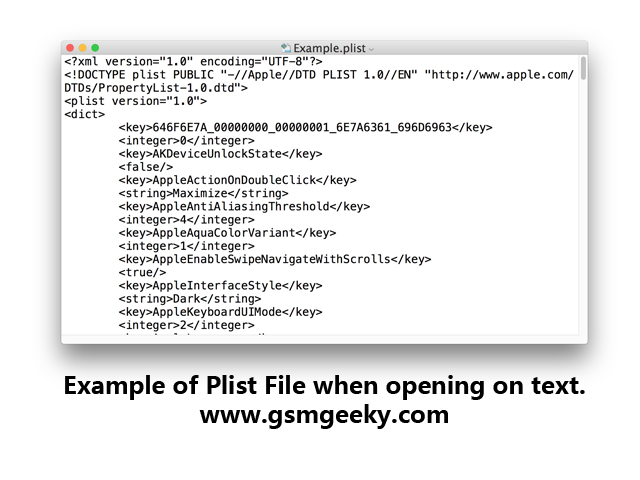What is Plist file and How to read ?
“This post is only for educational purposes.” When you come across this statement, it serves as a clear indication that the content being presented is intended solely for educational enrichment and learning. It emphasizes that the information, ideas, or opinions shared within the post are meant to foster knowledge, critical thinking, and intellectual growth. The primary goal is to provide valuable insights, promote understanding, and encourage thoughtful discussions within an educational context.
Plist stand for A Property List (plist) file is a data format used in macOS, iOS, and other Apple operating systems to store configuration information, preferences, and other types of data. It is a structured XML or binary file that contains key-value pairs, arrays, and dictionaries, and can be read and written by applications using Apple’s Core Foundation framework.
Plist files can contain a wide variety of data, such as application preferences, user settings, application state, and more. They are commonly used by Apple’s own applications as well as third-party software to store user-specific data, such as bookmarks, login credentials, and application-specific settings.
Plist files can be edited manually using a text editor, or they can be modified programmatically using the Core Foundation APIs. In addition, Apple provides a tool called “Property List Editor” that allows users to view and edit plist files in a graphical user interface.

How to ready Plist file from Editor ?
Plist files can be read using a variety of methods, depending on your needs and the platform you are working on. Here are a few common methods:
Property List Editor: On macOS, you can use the built-in Property List Editor tool to view and edit plist files. To open a plist file with Property List Editor, right-click on the file and select “Open With” > “Property List Editor”. You can then browse the contents of the plist file and make any necessary edits.
Text Editor: Plist files can also be opened and edited using a plain text editor, such as Notepad on Windows or TextEdit on macOS. However, be careful when editing plist files manually, as they are structured and contain specific keys that must be formatted correctly in order for the file to be read correctly.
Third-party Plist Editors: There are also several third-party applications available that are specifically designed for editing plist files, such as PlistEdit Pro and Xcode’s Property List Editor.
Programmatic Access: If you are developing software for macOS or iOS, you can use Apple’s Core Foundation framework to read and write plist files programmatically. This allows your application to access and modify plist files without requiring the user to open them manually.
where to find and Locate Plist file on Mac os ?
Plist files can be located in several different locations on macOS, depending on the type of data they contain and which application or system process they are associated with. Here are a few common locations where you can find plist files on macOS:
~/Library/Preferences: This folder contains plist files that store user-specific preferences for applications, system settings, and other types of data. Each plist file in this folder is typically named after the application or process it is associated with, and has a “.plist” file extension.
/Library/Preferences: This folder contains system-wide preferences that apply to all users on the computer. Like the ~/Library/Preferences folder, plist files in this folder are typically named after the application or process they are associated with.
~/Library/Application Support: This folder contains application-specific data that may include plist files for storing preferences or other types of data. Each subfolder in this directory typically corresponds to a specific application.
/System/Library/LaunchAgents and /System/Library/LaunchDaemons: These folders contain plist files that are used by the macOS launchd process to start and manage system-level daemons and agents. These files are typically named after the process they are associated with, and have a “.plist” file extension.
Note that some plist files may be hidden by default, so you may need to adjust your Finder settings to show hidden files in order to locate them. To do this, open a Finder window and press Command + Shift + Period to toggle the display of hidden files.
Download Tool from here : How to read Plist File ?
Join Our Telegram group for latest updates: http://t.me/gsmgeeky1
Also read :
iKey Prime Tool for GSM MEID Signal Bypass ios12 to ios14.8
Mina Ramdisk Activator for IOS15 sim Working
iRemoval Pro Windows Bypass Tool
SMD iCloud Bypass Tool Download
Bypass Checking Tools Free
EMC MEID Bypass tool Download
iCloud Bypass MEID Device with Network/Signal Fix


